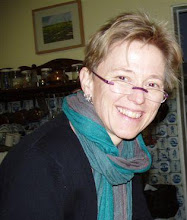Okay, I am not so desperate as the guy in the Jack London story, fighting sub-zero temperatures on a remote trail while trying to coax flame from a few sticks in the snow. But I
do get anxious about making a fire, and this weekend it was more important than
building a picture-perfect blaze in the fireplace.
It was cold. There was no central heat. I needed that fire.
We are talking out in the country. And, here’s the thing: I
am no master fire builder. Every time I put my match to newspaper, tucked
carefully under sticks of kindling and neatly placed pieces of wood, I worry that
the ratio of big to small branches is workable, that the newspaper is neither
too tightly crumpled nor too loose, and I hope that the fire gods will smile on
me and give me heat. Sometimes, they do. Most times, even. But it still comes
as a surprise.
Perhaps that’s because I did not grow up making fires. I gathered
kindling in the “woods” behind our Long Island home – a vacant lot in a
suburban development in Setauket. I approached this very important assignment with
the earnest vigor of the good little 7-year-old I was, gathering the driest,
best-sized sticks, then twisting pages of newspaper just so to set beneath them
and delivering it all to my father, who put it all together and made the actual
fire himself.
As a teenager in Florida, I made a small fire in another
vacant lot, which I somehow knew was not allowed – just as I knew the
cigarettes my friend snuck from her mother’s purse for us to try, lighting them
at our tiny stick fire, were forbidden. Later, in North Carolina, my college
boyfriend showed me how to light a fire in his woodstove, which I did while he
was away and I stayed at his house, taking care of his cats. I felt like a
pioneer woman, choosing quick- and hot-burning pine to burn in the wood cookstove,
congratulating myself when the water for my tea finally boiled.
I shared my own house in college with two fire building
housemates, who dealt with the woodstove themselves. We rented the house, on a
mountain road outside Boone, N.C., for $150 a month, total, and it was as
drafty as a barn, with gaps in the walls where moonlight and the cold seeped in.
The stove was in the one interior room, and
that is where we spent all our time, with the doors to the kitchen, living room
and bedrooms closed tight against the weather. At bedtime, we would turn on
electric blankets in the bedrooms, wait for them to heat up, then dive under
the covers until morning.
We needed fire in that house. Last weekend, same: drafty
house, up in the mountains of SW Virginia. Cold grate. No fire.
I know I can do this – I’ve done it before. But I am a
junior firebuilder. A junior firebuilder, walking into a cold house at the end
of a dark road a mile from any neighbor. Well, less than a mile, but far enough
so that it was pitch dark walking between the car and the front door and the
only sounds were deer sneaking around in the woods. This was no vacant lot in Florida.
It was the first time I’d been on my own there, and I arrived at 8:30, in the
dark of one of our first cold autumn nights, with temperatures below 30 degrees
outside—and probably inside as well. I kept my hat and coat on.
To start a fire: I checked the flu in the fireplace. I gathered
up the very dry kindling and wood I’d brought along, crumpled newspaper just as
Daddy taught me, arranged my sticks on top and placed a couple of small logs
just so. I struck a match. I used the new trick my honey (and master
firebuilder) showed me, and directed the first wisps of smoke up the flu with a
lit bit of newspaper held where the fireplace gives way to chimney.
Voila! A face-warming fire in the grate.
Amazing.
I know the woodstove in the next room would have been more
efficient. It would eventually warm the whole house, unlike the fire, which burned
one side of my legs but left the other side of me, and the rest of the room, cold.
Like a camp fire. But I kept my hat on and, for the couple hours before bed, the
fireplace was perfect.
I sat contentedly, luxuriating in the fire’s glow,
occasionally feeding it another log that I’d warmed on the stone hearth first.
At bedtime, I placed the screen over the fireplace and opened
the door to the bedroom.
Where I’d switched on the space heater.
There are lots of ways to build a fire.




